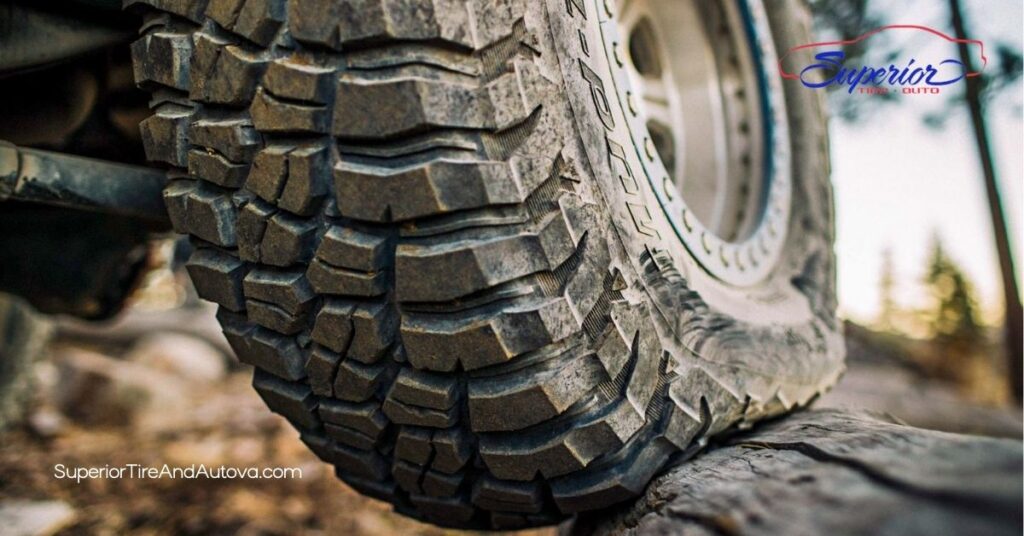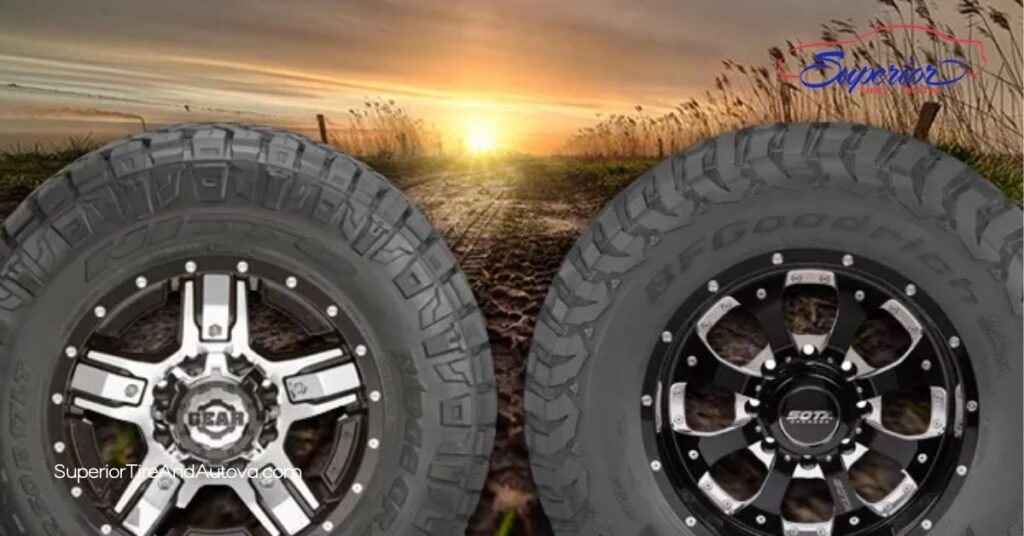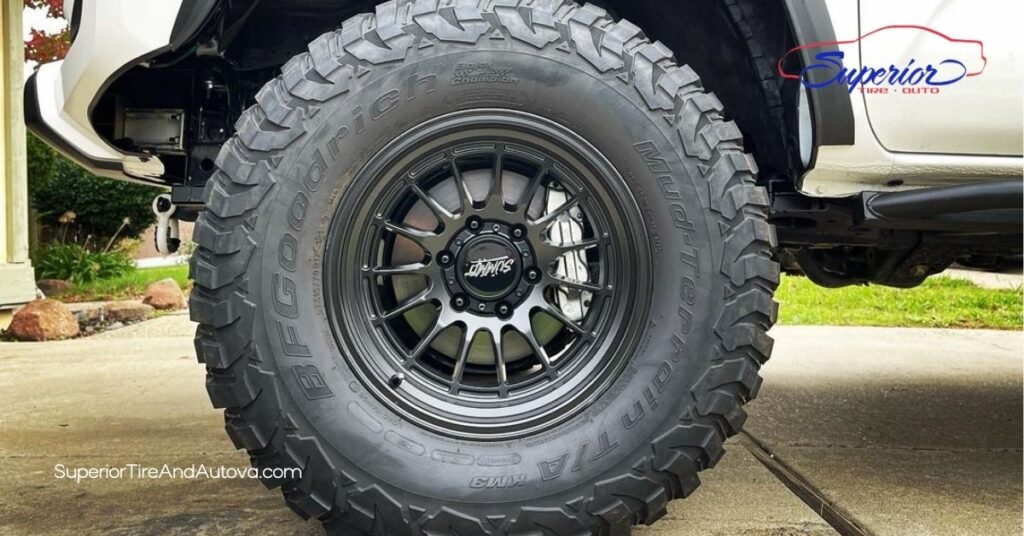When it comes to tackling tough terrains, choosing the right tire can make all the difference. You might be torn between the BFG KM3 and the KO2, two heavyweights in the off-road tire arena. Both tires promise exceptional performance but cater to different needs.
Overview of BFG KM3 and KO2

Both the BFG KM3 and KO2 excel in tough conditions, catering to off-road enthusiasts. Each tire features unique attributes customized to various driving styles and terrains.
Key Features of BFG KM3
BFG KM3 includes superior traction, making it effective on mud, rocks, and loose surfaces. The tire uses an innovative tread pattern that enhances grip and control. Also, a sidewall design provides better resistance to cuts and punctures. Increased durability results from advanced rubber compounds, ensuring longevity on rugged trails. Its aggressive design promotes optimal self-cleaning capabilities, maintaining performance even in challenging environments.
Key Features of KO2
KO2 stands out with its adaptive tread design, providing versatile performance across different terrains. This tire features a tough sidewall, which adds extra protection against sharp objects and obstacles. Enhanced traction on both wet and dry surfaces leads to improved handling and control. The KO2 utilizes a special rubber formulation that resists wear, extending its lifespan significantly. Besides, its more aggressive tread pattern allows for enhanced grip, making it ideal for all-terrain driving.
Performance Comparison

The performance of BFG KM3 and KO2 tires varies significantly, catering to different driving needs and preferences.
Off-Road Capability
KM3 tires thrive in off-road environments, especially on muddy and rocky terrains. Enhanced traction comes from a revised tread pattern combined with the innovative Krawl-TEK compound, providing a 5-8% increase in grip compared to the previous KM2 version. Strength stands out as well; KM3 offers 27% stronger sidewalls, ensuring resilience during technical driving challenges. When handling steep descents, rocky obstacles, or tackling off-camber sections, the KM3 outperforms. Conversely, KO2 tires serve as all-terrain contenders. While they’re effective off-road, they lack the specialized performance of KM3 for extreme conditions.
On-Road Performance
On-road, KO2 excels with its adaptive tread design, providing versatility across various surfaces. A tough sidewall enhances protection from road hazards, making it a solid choice for street driving. Dry and wet surfaces pose no issue for KO2, showcasing improved traction in varied weather. KM3, while competent on-road, doesn’t match the KO2’s performance in everyday conditions due to its exact off-road focus. Given these differences, selecting between these tires hinges on your preferred driving environments.
Tire Durability
When evaluating the durability of the BFGoodrich KM3 and KO2 tires, important differences emerge. You’ll find that the KM3 tires excel with enhanced durability, thanks to 27% stronger sidewalls. This strength offers superior protection against punctures and off-road hazards. After extensive use, these tires maintain impressive tread durability; for instance, a tread depth of 15/32 inches was recorded after 12,000 miles, down from the original 18/32 inches.
In contrast, KO2 All-Terrain tires come with softer sidewalls, making them more prone to punctures compared to KM3s. While the KO2 still provides decent performance, its softer construction means you may encounter more issues in rugged terrains as wear increases.
Wear Resistance
KM3 tires demonstrate remarkable wear resistance, contributing to their overall longevity. The tread design significantly reduces wear even in harsh conditions. You can expect the KM3s to maintain a substantial amount of tread life through rigorous use. On the other hand, KO2 tires feature a special rubber formulation that extends their useful life. While this is beneficial, they generally don’t resist wear as effectively as the KM3 in extreme environments.
Weather Performance
About weather performance, KM3 tires truly stand out in challenging wet conditions. Their tread design enhances grip and control on mud and loose surfaces. You’ll appreciate how effective these tires are in maintaining traction where others might fail. The KO2 tires perform admirably across various terrains and weather conditions. Their adaptive tread design ensures good handling in both wet and dry climates. But, the KM3 tires provide a clear advantage when facing extreme conditions, ensuring dependable reliability.
Price and Value

When comparing the BFGoodrich KM3 and KO2, several aspects of price and value emerge. Both tires cater to unique driving needs, reflecting their price differences.
Cost Analysis
Fuel economy varies between these two options. The KO2 typically provides better mileage than the KM3, often resulting in a fuel savings of 1 to 2 miles per gallon in mixed driving conditions. Weighing more, the KM3’s aggressive tread pattern affects fuel efficiency negatively. Durability also plays a crucial role in cost analysis. KM3 tires feature stronger sidewalls and a durable construction, which enhances their longevity in extreme off-road conditions. While the KO2 offers a reliable performance, its softer sidewalls may lead to more frequent replacements in rugged terrains.
Overall Value for Money
Value for money factors prominently in your decision. KM3 tires offer exceptional off-road performance, making them worth the investment for avid off-road enthusiasts. KO2 tires shine with versatility, providing solid performance across diverse terrains, which can justify their lower price point. Consider your driving habits and conditions. If you frequently navigate extreme off-road challenges, the KM3’s advanced capabilities warrant their higher cost. Alternatively, the KO2 might be the better choice for drivers who prioritize mixed use and seek a tire that balances on-road and off-road performance effectively.
Conclusion
Choosing between the BFG KM3 and KO2 eventually hinges on your driving style and terrain preferences. If you tackle extreme off-road challenges frequently the KM3’s superior traction and durability will serve you well. Its robust sidewalls and innovative tread design make it the go-to option for tough conditions.
On the other hand if you need a tire that balances on-road comfort with off-road capability the KO2 shines in versatility. It offers solid performance across various terrains and weather conditions making it a practical choice for everyday driving. Weigh your needs carefully to find the tire that best fits your adventures.
Frequently Asked Questions

What are the main differences between BFG KM3 and KO2 tires?
The BFG KM3 specializes in extreme off-road conditions, providing superior traction on mud and rocks, while the KO2 offers versatile performance for both on-road and off-road driving. The KM3 features a stronger sidewall and aggressive tread, whereas the KO2 focuses on adaptability across various terrains.
Which tire performs better in rugged terrains?
The BFG KM3 excels in rugged terrains due to its innovative tread pattern and Krawl-TEK compound, allowing for 5-8% better grip than its predecessor. It is designed specifically for challenging off-road environments, outperforming the KO2 in extreme conditions.
How durable are the KM3 and KO2 tires?
The KM3 features 27% stronger sidewalls, offering superior puncture resistance and maintaining tread durability even after extensive use. In contrast, the KO2 has softer sidewalls, making it more susceptible to punctures in rugged conditions but uses a special rubber formulation to extend its lifespan.
What is the best tire for wet weather conditions?
The BFG KM3 stands out in challenging wet conditions, providing excellent grip and control. Although the KO2 performs well in various weather, it lacks the KM3’s reliability in extreme conditions, making the KM3 the preferred choice for wet terrains.
Are there significant price differences between the KM3 and KO2?
Yes, the KM3 typically costs more due to its specialized design for extreme off-road performance. The KO2 may offer better fuel economy, which can save money in the long run, making it more budget-friendly for a balance of on-road and off-road use.

